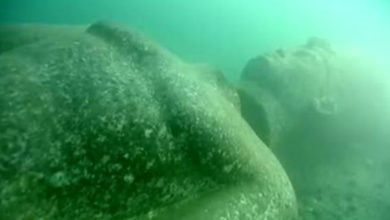After repeatedly finding a 4,000-year-old Egyptian relic inexplicably facing the wrong direction, curators at the Manchester Museum decided to take matters into their own hands. They set up a time-lapse camera, pointed it at the statue, and hoped to catch whoever — or whatever — was causing it to rotate 180 degrees.
What they found, if it’s to be believed, is downright curious.
The video, which you can see right up there, shows the statue in question. It’s the farthest from the camera, a 10-inch-tall statuette of Neb-Sanu from 1800 BC, originally an offering to Osiris. It rotates, very slowly, counter-clockwise. And despite the fact that the museum appears to be very active, no one seems to approach to the statue, or otherwise get close enough to move it.
Well, from what we can see in the video, anyway.
The statue’s movement is so slow that no one notices. At night, after the museum is closed, the statue stops rotating, only to continue the next day. However, once it reaches 180 degrees, it stops completely.
An Ancient Egyptian Curse?
The most likely explanation is that vibrations from museum visitors are causing the statue to move. Physicist Brian Cox was asked for his own opinions on the matter (really?), and he too believes it’s simply a case of differential friction — a subtle vibration between the glass and the stone statue. It’s circular rotation is, perhaps, due to an uneven base.
However, the relic has been in the museum for about 80 years, and only recently has it been found mysteriously rotating. Egyptologist Campbell Price, who works at the museum, has his own theory. “In Ancient Egypt,” he says, “they believed that if the mummy is destroyed then the statuette can act as an alternative vessel for the spirit. Maybe that is what is causing the movement.”
In Egypt, the statue would have been placed within the tomb alongside the mummy, and offerings would be placed at its feet. According to Campbell, “The hieroglyphics on the back ask for ‘bread, beer and beef.'”
The relic, despite its mysterious rotation, is locked inside a glass case, and only Campbell has the key. So what causes it to move? Differential friction? An Ancient Egyptian curse?
Or that most mystical of forces: Guerrilla marketing?
Update: A report from November, 2013 shows an analysis of the video along with readings of vibrations in the museum, showing that the statue’s movement most definitely was due to vibrations caused by museum visitors.





